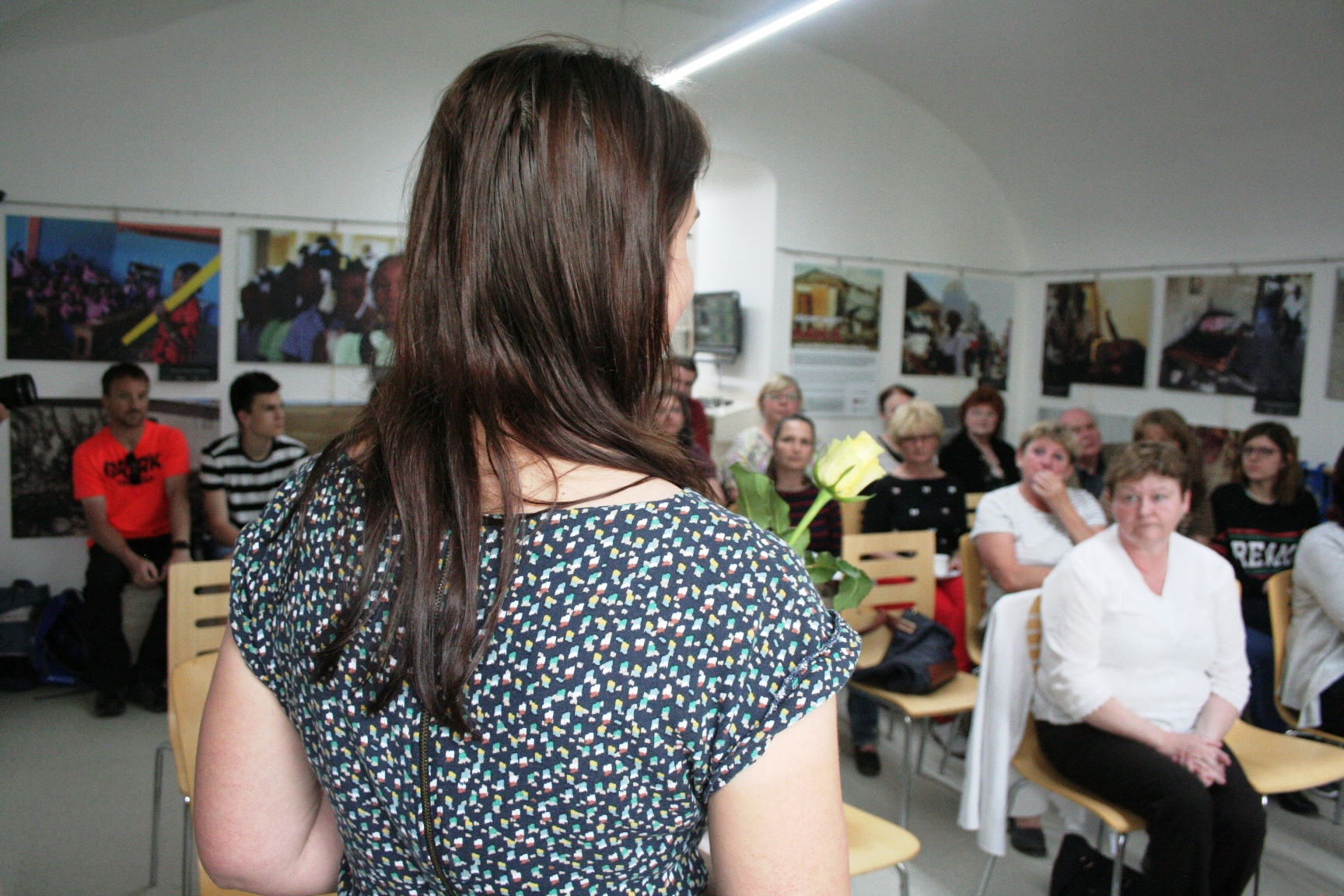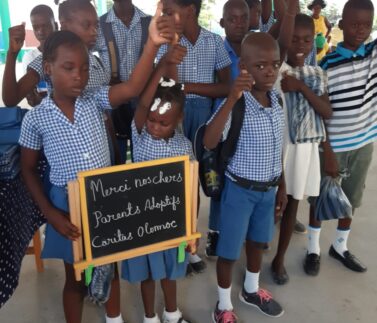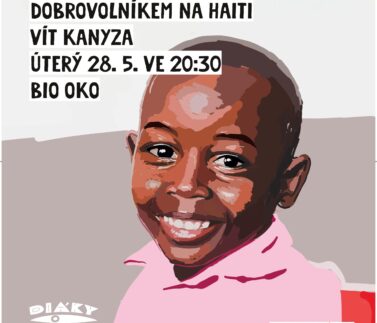
The exhibition, lecture, projection and coffee tasting approached Haiti
Šternberk – Smells coffee, bubbly water, people view brightly colored photos or painted canvas, jewelry, soaps or greeting cards. Then they sit on their chairs and the screen lights up in front of them. And they’re in Haiti. They travel to the Caribbean not only through the exhibition All Colors of Hope, but also by a lecture by humanitarian worker Klára Lőffelmannová, who helps the most vulnerable in Haiti under the auspices of the Archdiocesan Caritas Olomouc.
Haiti is a country known for its natural disasters, poverty and lack of quality drinking water. But few people know that the vast majority of Haitians are descendants of slaves brought from Africa. At the same time, they were the first in the world to rebel and free themselves from slavery.
“Haitians are very skilled, they will find a way to fix anything. They also include craftsmen, such as shoemakers, bakers, and most men feed on fishing,” says Klára. Then the viewers see on the screen what it looks like inside the hut, they are all sorts of things. Compressed from sheet metal or clay with palm leaves, sometimes concrete. However, most of the daily activities take place outside, where they also cook.
Five and six people on a single motorcycle
There is also confusion in the streets, where countless cars, carts and mopeds move through the city. “Nobody follows the traffic rules. Sometimes a donkey or a goat runs between cars. There are also motorbikes passing by, with five or six people sitting on one,” explains Caritas worker.
The capital of Haiti is Port au Prince. According to Klára, the city is a surprise and not always a nice one. Once she had to turn the car with the driver to avoid burning barricades. This is what people have demonstrated against a corrupt government. Unfortunately, there was shooting and the demonstration cost a few people life. “In addition, there are different gangs in the neighborhoods. It’s not safe in Haiti,” she adds
From crowded cities, viewers will reach the barren countryside. They watch a short film from a remote area in the northwest of the country – Baie de Henne. The shots of the sun-drenched earth complement authentic chanting and drumming. Nursing of young children also appears in the film. These health camps are organized by Caritas with the help of Czech donors. Every year, Klara Löffelmannová creates a makeshift surgery in the Baiedehen school canteen and they go for it. “Inspections and aftercare are very important. If Haitians do not catch a trivial illness at the beginning, it may result in death,” Klára points out.
The next stop is Gonaïves, where the participants will get acquainted with the project Long-distance adoption. They will find out how the poorest Haitian children are doing and how the project helps them. They can go to school for education and hot food. The lecture in Šternberk was diversified by child mannequins who wore the uniforms of Haitian schoolchildren. And it suited them well.
A picture of sadness and hope
And the lecture is over. People are leaving the Information Center, some of them supporting projects in Haiti by buying exhibited jewelry and a variety of handmade things imported from Haiti. Among them are painted canvas. One of them is decorated by the office of director Caritas Šternberk, who organized the lecture. “I bought a canvas years ago during a charity event. The director of the Archdiocesan Caritas Olomouc imported them directly from the Haitian marketplace. All the canvases were fading away, but one remained, and I kept coming back to him. It was different, so sad, stupid,” says Pavlína Vyvozilová and describes the painting. The canvas is painted in blue-black colors, its main motif is Haitian’s head, the woman kneeling in the cemetery and all around the cross. “A Haitian looks into the distance and sees the future. The painting struck me,” adds the director of Charity Šternberk.
Thanks to many Czech donors, some children and needy people in the Haitian community now have a chance for a better future.
Thank you for your support. We also thank Charita Šternberk. It also supports us in our activities. We also thank Caritas Šternberk and the Šternberg Information Center for organizing this lecture and exhibition.
Karolína Opatřilová, Archdiocesan Charity Olomouc



